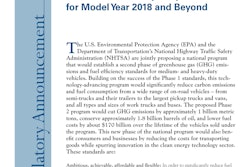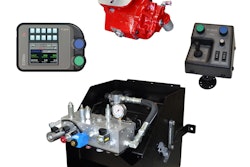Allison Transmission Holdings Inc. announces that it has been working with the U.S. Environmental Protection Agency (EPA) and National Highway Traffic Safety Administration (NHTSA) as they consider revisions to the 'Phase I' Model Year 2014 to 2018 rule regarding fuel efficiency and greenhouse gas emission (GHG) standards for medium- and heavy-duty vehicles. The revisions would potentially extend the Phase I program into the middle of the next decade.
"Given the complexity of the medium- and heavy-duty commercial vehicle manufacturing sector, and the wide range of vehicles and vehicle configurations involved, we are encouraged that EPA and NHTSA have been willing to engage with Allison and other companies to review technical issues and conduct additional testing," says Deborah Gordon, Executive Director of Regulatory Issues and Hybrid Programs for Allison Transmission. "We anticipate continuing to work with both agencies as they move forward with their 'Phase II' rulemaking effort."
Allison is the world's largest manufacturer of fully automatic transmissions for medium- and heavy-duty commercial vehicles and is a leader in hybrid-propulsion systems for city buses. Celebrating its centennial in 2015, the company continues to focus on fully understanding and addressing the needs of its customers. Accordingly, Allison has embraced the opportunity to collaborate with EPA and NHTSA to align any regulatory effort with the technological and commercial realities of the tractor and vocational vehicle markets.
"Our customers demand both performance and fuel efficiency which we are delivering with our FuelSense controls features," says Gordon. "Nearly 200 transit bus fleets in the U.S. operate daily with our parallel hybrid propulsion system and experience up to 30% improved fuel economy over a conventional powertrain."
More work on the Phase II rulemaking is expected to be completed in the coming months, including a public notice and comment period on proposed changes. The EPA and NHTSA are expected to continue discussions with manufacturers and other interested parties. Gordon indicates that one primary goal should be to ensure a coordinated national program that serves the interests of commercial-duty vehicle customers while also properly balancing costs, energy impact and environmental concerns.

















![Sa P75 I Sahr[80]](https://img.oemoffhighway.com/mindful/acbm/workspaces/default/uploads/2025/10/sa-p75-isahr80.Cn3n79HB4H.jpg?ar=16%3A9&auto=format%2Ccompress&fit=crop&h=135&q=70&w=240)